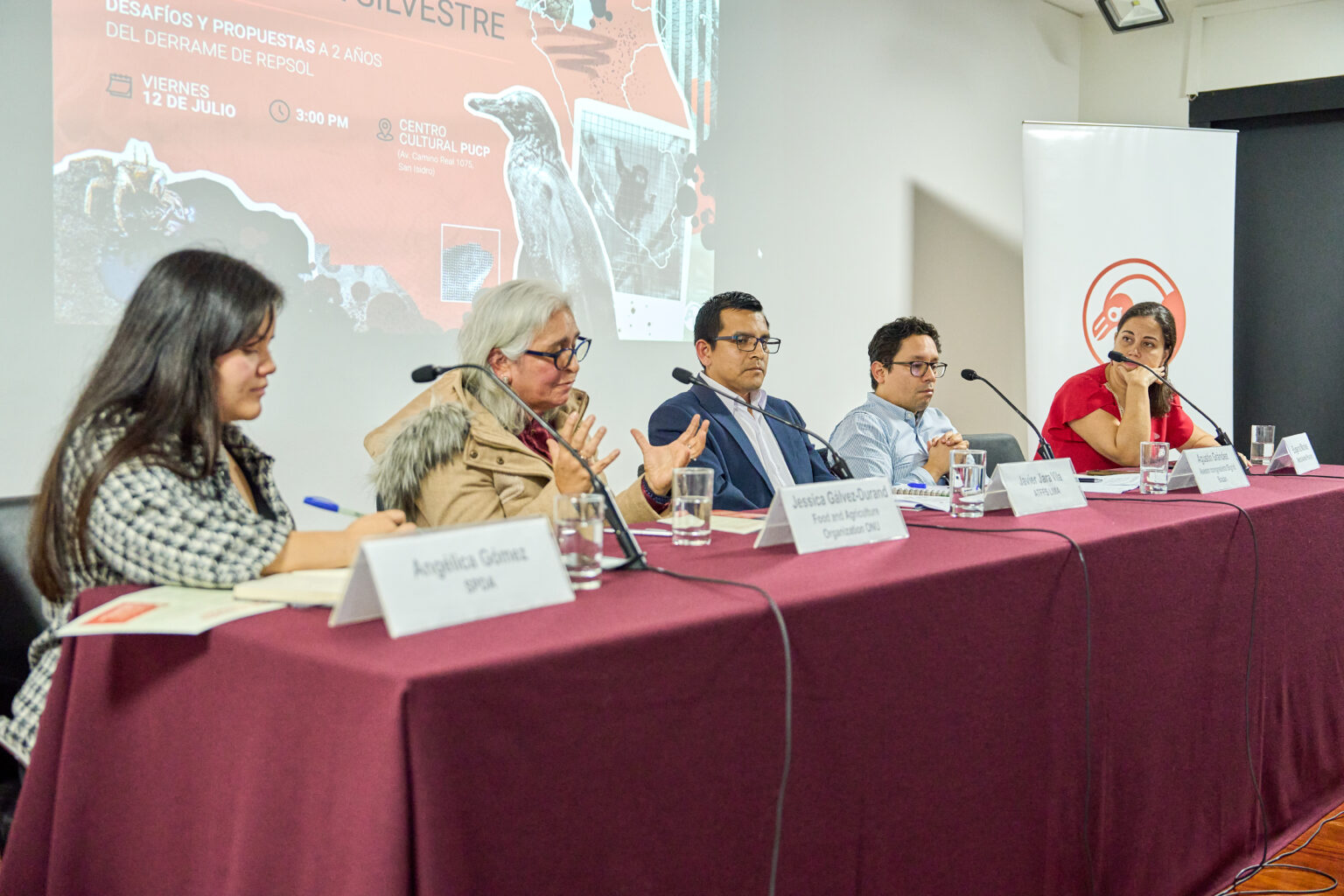Experts analyze how to protect wildlife after oil spill

Last Friday, the event “The Animal Welfare Approach in Wildlife” was held, where participants participated in a space for dialogue with wildlife specialists and experts to analyze and discuss the best strategies to ensure the welfare of animals in their natural habitats, especially after the devastating effects of the oil spill in the Sea of Ventanilla.
As a result of this disaster, 1,855 animals were declared dead, 2,053 were affected and 198 survived. It should be noted that there is no exact figure due to the number of species affected that are born in marine and continental waters (e.g. dolphins, whales, fish, among others).
“Wild animals are sentient beings. This is already recognized in the Animal Protection and Welfare Act, but not in the Forestry and Wildlife Act. And this recognition should also be established in the corresponding legal framework”, explained Luis Zari, legal specialist of SPDA’s Forests and Ecosystem Services Program.
Reflecting on the consequences of the oil spill on the Peruvian coast, Javier Jara, a specialist from ATFFS-Lima SERFOR, said that “more or less we see only 10% to 15% of the fauna that has been affected. Are these 2,000 animals really the ones affected?”
Also participating in the panel was Agustín Grández, senior advisor in the office of Congresswoman Sigrid Bazán, author of PL 7379. As he explained”, what the legal formula that has been presented proposes is to talk about wild animals in its generality, which includes both wild animals in captivity and in the wild.
Jéssica Galvez-Durand, coordinator of the FAO ECTAD-Peru project, emphasized that the health issue is linked to animal welfare.
“I believe that our legislation, if we have the opportunity to update some of them, should focus on a single health approach. Seventy-five percent of the diseases that affect humans are zoonotic”.
 In the photo Jéssica Galvez-Durand and Javier Jara. Photo: Alonso López / SPDA
In the photo Jéssica Galvez-Durand and Javier Jara. Photo: Alonso López / SPDA
Eugenia Morales, campaigns manager for World Animal Protection, said more and more people are aware of the care that wild animals need.
“When a person takes a photo with a wild animal, we see that the comments change. It is no longer how cute or how happy, but this is cruelty, this is not right. And every one of us can do that”.
How to ensure animal welfare in the wild?
SPDA specialists analyzed the lessons learned and, in a publication, highlighted the following actions to protect wildlife from an event similar to the oil spill:
Strengthen the legal framework
Currently, the legal framework (Animal Protection and Welfare Act) only punishes acts of cruelty against wild animals in captivity, not in the wild. This leads to legal loopholes in cases such as oil spills or other environmental disasters, road kill, or acts of cruelty such as what happened to a white howler monkey (Cebus albifrons) who eventually died after being tortured.
Government sanctuaries
The main purpose of sanctuaries is to rehabilitate wild animals. In practice, however, they focus on rehabilitating specimens from the illegal trade.
According to SPDA specialists, and in accordance with Article 67 of the Wildlife Management Regulations (Supreme Decree No. 019-2015-MINAGRI), “the State is empowered and should establish rescue centers strategically located throughout the territory in order to provide a rapid, specialized and continuous response while the final destination of the individual is determined, which would contribute to increasing the likelihood of its release, if appropriate”.
- Read and download the publication at this link.
- Visit our multimedia special: https://www.historiadeunderrame.pe/home/